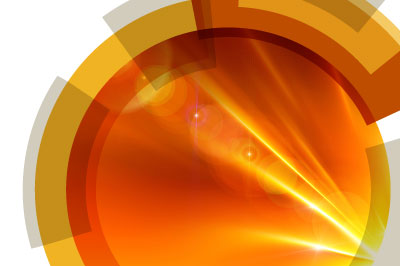 James Durrant, Imperial College London, United Kingdom
James Durrant, Imperial College London, United Kingdom
James Durrant is Professor of Photochemistry in the Department of Chemistry, Imperial College London and Sêr Cymru Solar Professor, College of Engineering, University of Swansea. His research addresses the photochemistry of new materials for solar energy conversion – targeting both solar cells (photovoltaics) and solar to fuel (i.e.: artificial photosynthesis). It is based around employing transient optical and optoelectronic techniques to address materials function, and thereby elucidate design principles which enable technological development. His group is currently addressing the development and functional characterisation of organic and perovskite solar cells and photoelectrodes for solar fuel generation with funding from the EPSRC, WAG, EC, ESF and industry. More widely, he founded the UK Solar Fuels Network and leads Imperial’s Centre for Plastic Electronics and the Welsh government funded Sêr Cymru Solar initiative. He has published over 400 research papers and 5 patents, which have been cited over 40,000 times, leading to an h-index of 114. He was elected to a Fellow of the Royal Society in 2017.
Talk title - Durrant - In operando spectroelectrochemical studies of water oxidation kinetics on metal oxide electrodes and photoelectrodes
 Kyung-Byung Yoon, Sogang University, South Korea
Kyung-Byung Yoon, Sogang University, South Korea
Kyung Byung Yoon received his B.S. from the Department of Chemistry, Seoul National University in 1979. In 1981, he obtained his M.S. from the Department of Chemistry, Korea Advanced Institute of Science and Technology (KAIST), Seoul, where his research field was hydrogenation reactions over metal-doped zeolites. From 1981 to 1984 he was employed by an engineering company, Seoul, Korea. In 1989, he earned his Ph.D. degree in inorganic chemistry from the Department of Chemistry, University of Houston, Houston, Texas, and his research field was photo-induced charge transfer reactions in zeolites. From 1989 he has been an Assistant, Associate (1993) and full Professor (1998) to the present. He had served as the President of the Korea Photoscience Society (2011), Councilors for International Zeolite Association (2007-2013) and Asian Photochemistry Association (2007-present), and as Secretary General, Chairman of Scientific Affairs, Chairman of Publications of the Federation of Asian Chemical Societies (FACS) (2005-2013). Since 2009, he has been the Director of the Korea Center for Artificial Photosynthesis (KCAP) supported by the Ministry of Science and Technology. He is also serving as a member of the Editorial Board of Energy and Environmental Science (EES), Section Editor of Current Opinion in Colloid and Interface Science. He is currently Fellow of Royal Society of Chemistry and Global Fellow of American Chemical Society.
Talk title - Pilot Scale Artificial Cactus
 Osamu Ishitani, Tokyo Institute of Technology, Japan
Osamu Ishitani, Tokyo Institute of Technology, Japan
Osamu Ishitani is Professor at Department of Chemistry of Tokyo Institute of Technology. He took his Dr. Eng. at Osaka University in 1987. After he spent three months as a visiting researcher at the Hahn-Meitner Institute, Berlin (Prof. Dr. W. Schnabel), he joined National Institute for Resources and Environment in Japan. He became a senior researcher at the same institute in 1993. He spent as a visiting researcher at the University of North Carolina at Chapel Hill (Prof. T. J. Meyer) for one and half years and them at the University of Nottingham (Prof. J. J. Turner) for three months between 1993 and 1995. Just after he returned to Japan, he became an associate professor at Saitama University in 1995. He moved to Tokyo Institute of Technology in 2002, and then he became a full professor in 2006. His main interests are artificial photosynthesis, photocatalytic CO2 reduction, photochemistry of transition metal complexes, and photo-functional metal complexes. He reserved awards, including the Japanese Photochemistry Association Award for 2007 and Commendation for Science and Technology by the Minister of Education, Culture, Sports, Science and Technology in 2017. He has been an editor of Journal of Photochemistry and Photobiology A: Chemistry, a vice president of Chemistry Society of Japan, and an international scientific committee member of various international conferences such as ISPPCC, ICCDU, and IPS. The details of his laboratory and his publication list can be found in http://www.chemistry.titech.ac.jp/~ishitani/index.html.
Talk title - New Directions to Development of Photocatalytic CO2Reduction
 Keiichi Tomishige, Tohoku University, Japan
Keiichi Tomishige, Tohoku University, Japan
Keiichi Tomishige received his B.S., M.S. and Ph.D. from Graduate School of Science, Department of Chemistry, The University of Tokyo with Prof. Y. Iwasawa. During his Ph.D. course in 1994, he moved to Graduate School of Engineering, The University of Tokyo as a research associate and worked with Prof. K. Fujimoto. In 1998, he became a lecturer, and then he moved to Institute of Materials Science, University of Tsukuba as a lecturer in 2001. Since 2004 he has been an associate professor, Graduate School of Pure and Applied Sciences, University of Tsukuba. Since 2010, he is a professor, School of Engineering, Tohoku University.
His research interests are the development of heterogeneous catalysts for
1) production of biomass-derived chemicals
2) direct synthesis of organic carbonates from CO2 and alcohols
3) steam reforming of biomass tar,
4) syngas production by natural gas reforming
Talk title - Deoxydehydration of sugars and sugar alcohols catalyzed by heterogeneous ReOx catalysts for the selective production of biomass-derived chemicals
 Jinhua Ye, National Institute for Materials Science, Japan
Jinhua Ye, National Institute for Materials Science, Japan
Jinhua Ye received her PhD from the University of Tokyo in 1990, and joined National Research Institute for Metals (former organization of NIMS) in 1991. She is now a Principle Investigator at International Center for Materials Nanoarchitectonics (MANA), National Institute for Materials Science (NIMS), Japan. She is also a Professor of Joint Doctoral Program in Graduate School of Chemical Science and Engineering, Hokkaido University, Japan from 2008, and the director of TJU-NIMS International Collaboration Laboratory, and Professor of Materials Science at Tianjin University, China, since 2011.
Her current research interests focus on the research and development of photo functional materials and their applications in the fields of environment preservation and new energy production. She has contributed more than 490 high quality journal publications, which have been cited over 30,000 times (h index: 87). She has been admitted as a Fellow of the Royal Society of Chemistry since 2016, and also selected as the 2016 Highly Cited Researcher (Thomson Reuters). She is currently serving as the Associate Editor of RSC Catalysis Science & Technology.
Talk title - Rational Design and Engineering of Active Sites for Efficient Solar Fuel Production
 Kazuhiro Takanabe, The University of Tokyo, Japan
Kazuhiro Takanabe, The University of Tokyo, Japan
Prof. Kazuhiro Takanabe is Professor in the Department of Chemical System Engineering at The University of Tokyo. He previously worked at King Abdullah University of Science and Technology (KAUST) from 2010 to 2018. Before he joined KAUST, he was Assistant Professor in the Department of Chemical Systems Engineering at the University of Tokyo (2008-2010). Upon receipt of his doctoral degree in engineering from the Tokyo Institute of Technology in 2006, he served as a Postdoctoral Fellow at the University of California at Berkeley from 2006-2008. During his doctoral study, Prof. Takanabe studied at the University of Twente in the Netherlands as an exchange student (2002-2004). He is currently Editor of the Journal of Catalysis since September 2017.
Talk title - Quantitative approach for studying photocatalytic water splitting
 Kazunari Nakajima, The University of Tokyo, Japan
Kazunari Nakajima, The University of Tokyo, Japan
Kazunari Nakajima earned his B.S. (2008), M.S. (2010), and Ph.D. (2013) from School of Engineering, The University of Tokyo, Japan under the supervision of Prof. Yoshiaki Nishibayashi. During his Ph.D. course (2011-2013), he received Research Fellowship for Young Scientists (DC2). In 2013, he started his academic career as Assistant Professor in School of Engineering, The University of Tokyo, Japan (Nishibayashi group). In 2018, he was promoted to Associate Professor.
He received Otsu Academy Award Fellow (2012), Dean's Award of School of Engineering, The University of Tokyo (2013), CSJ Student Presentation Award 2013 from The Chemical Society of Japan (2013), and CSJ Presentation Award 2018 from The Chemical Society of Japan (2018).
His research interest is development of transition metal-catalyzed molecular transformations of organic and inorganic molecules, e.g. (1) photoredox catalysis based on single electron oxidation of amines; (2) transition metal catalysis for construction of phosphorous-containing heterocycles.
Talk title - Photocatalytic C-C bond cleavage of dihydropyridines toward alkylation reactions
 Keigo Kamata, Tokyo Institute of Technology, Japan
Keigo Kamata, Tokyo Institute of Technology, Japan
Keigo Kamata received his B.S. (2001), M.S. (2003), and Ph.D. (2006) degrees from The University of Tokyo under the direction of Prof. Noritaka Mizuno. In 2007, he joined The University of Tokyo as a research associate in the Department of Applied Chemistry, and began his research on the development of polyoxometalate-based catalysts. In 2014, he moved to the Materials and Structures Laboratory at Tokyo Institute of Technology as an assistant professor. He received The Chemical Society of Japan Award for Young Chemists (2012), Tokyo Institute of Technology Challenging Research Award (2017), and The Young Scientists’ Prize of The Commendation for Science and Technology from the Ministry of Education, Culture, Sports, Science, and Technology of Japan (2018). His research interests include the design and synthesis of advanced inorganic catalyst materials and the construction of highly atom-efficient catalytic systems.
Talk title - Development of Crystalline Mixed Oxide Catalysts Based on Perovskite Oxides and Metal Phosphates
 Shuhei Ogo, Waseda University, Japan
Shuhei Ogo, Waseda University, Japan
I received my B.S. (2006), M.S. (2008) and PhD (2011) degrees from the Kochi University under the direction of Assist. Prof. Ayumu Onda and Prof. Kazumichi Yanagisawa. I worked at Hiroshima University from 2011 as a postdoctral fellow. In 2013, I moved to Waseda University as an assistant professor (2013-2017). In 2018, I am working as a guest associate professor of Waseda University. I also working as a PRESTO researcher of Japan Science and Technology (JST) since 2016. I received the Japan Petroleum Institute Award for Distinguished Papers (2017 and 2015), the Japan Petroleum Institute Junior Society Best Presentation Award (2015), Best Presentation Award for Young Researchers in the 116th Meeting of the Catalysis Society of Japan (2015) and the Japan Institute of Energy Award for Encouragement (2014). My research interests are (1) valorization of methane and biomass, (2) low temperature catalytic reaction and (3) novel electro-catalytic system.
Talk title - Low-temperature Catalytic Oxidative Coupling of Methane by Electron Hopping in an Electric Field
 Maria-Magdalena Titirici, Imperial College London, United Kingdom
Maria-Magdalena Titirici, Imperial College London, United Kingdom
Magda Titirici has a PhD from University of Dortumnd, a German Habilitation from the Max-Planck Institute of Colloids and Interfaces and University of Potsdam and is currently a Professor of Sustainable Materials Chemistry at Queen Mary University of London.
Magda is the author of around highly cited 150 publications (h-index=62) in the field of sustainable materials for energy storage and conversion, several book chapters and two edited books. She is an associate editor for J. Mater. Chem. A (RSC).
Magda has been awarded the Rosenhain Medal and Price from the Institute of Materials and Mines in London in recognition of distinguished achievements in materials science under the age of 40 in 2016, she is the USERN laureate in physical sciences 2017 as well as the recipient of an honoray PhD from University of Stockholm in 2017, the Chinese Academy of Science President’s Fellowship in 2018 as well as the Royal Society of Chemistry Corday Morgan Prize 2018.
Talk title - The secret life of carbon in electro-and photocatalysis
























